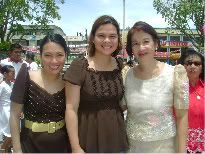Among the two urgent things that require man’s attention today is the economy and the environment and councilor Rachel Zozobrado said there is a way to find a common ground between the two through charcoal production using forest wastes.
“Charcoal briquettes production is not only a timely and practical community livelihood project for Dabawenyos but it is also a push for the environment,” Zozobrado said while explaining the reason why she passed a resolution urging the Department of Environment and Natural Resources as well as the City Environment Office to adopt the community-based project.

DENR’s Ecosystems Research and development Bureau developed the technology of making charcoal briquettes using leaves, twigs, stems and other forest waste materials. The method is also not too complicated considering that it only requires that the forest wastes are carbonized, fed into a grinding machine, mixed with binders like gelatinized starch then compacted in a molder to produce uniform-sized charcoal briquettes.
Once the community is properly trained about the process of producing charcoal briquettes using forest waste, she said, there will be more livelihood alternatives for them which will also ease the pressure off our forests and the environment. Upland farmers traditionally cut down trees to produce charcoal but this project will reduce the practice of cutting trees in the natural forests, she added.
“The charcoal briquettes are an environment-friendly fuel alternative which can be used by households and even business now that the price of liquefied petroleum gas has once again gone up,” Zozobrado said. She said that when tested, the briquettes are easy to ignite and emit a steady heat with low clean flame.
Instead of discouraging upland farmers from cutting trees without giving them an alternative, she said, why not train them in the process of making charcoal briquettes using forest waste? This way, Zozobrado said, they will still retain their livelihood while keeping the environment safe.
The DENR can conduct the training in coordination with the barangays to provide possible livelihood for the community, she said.







